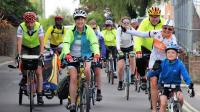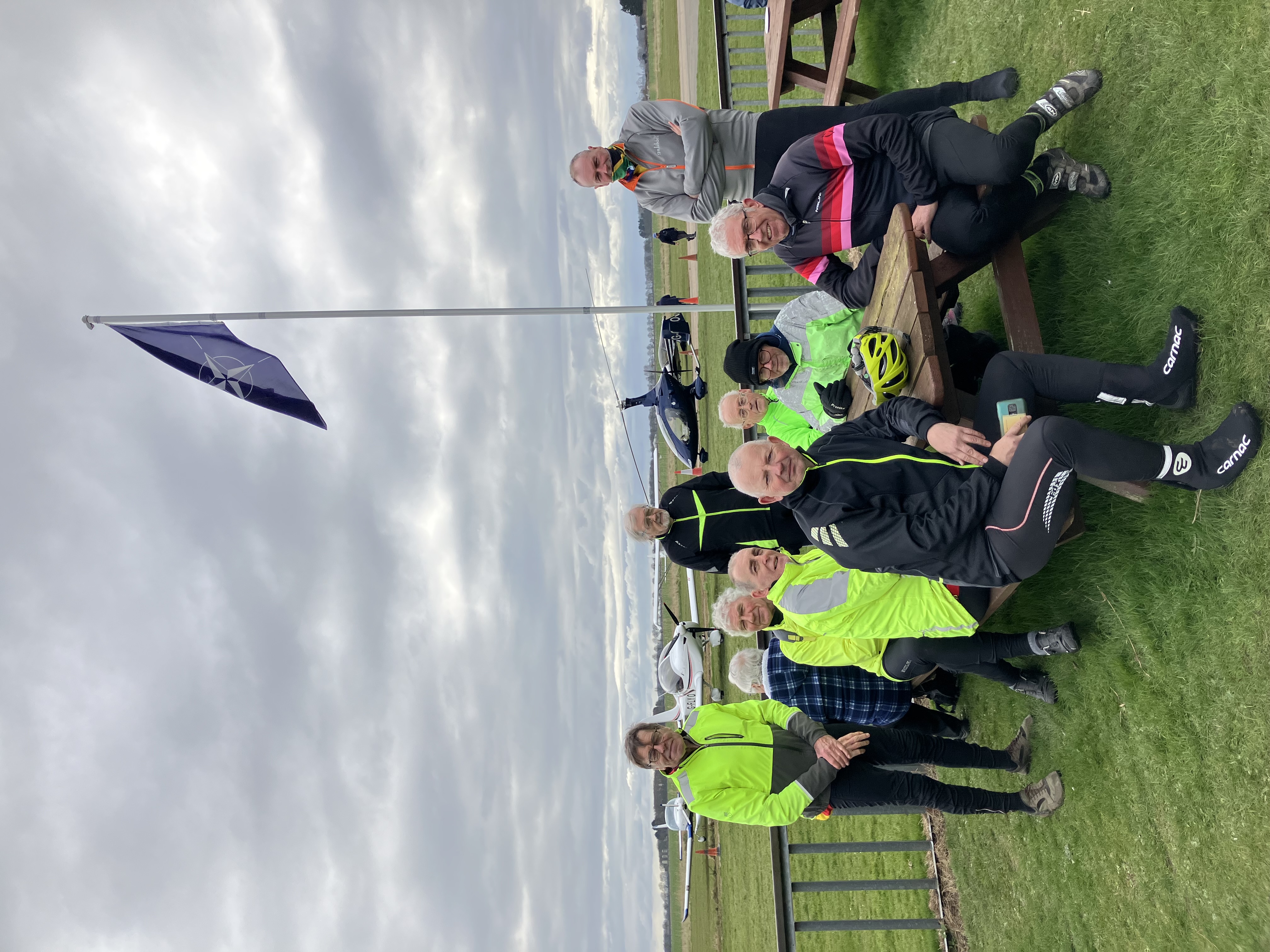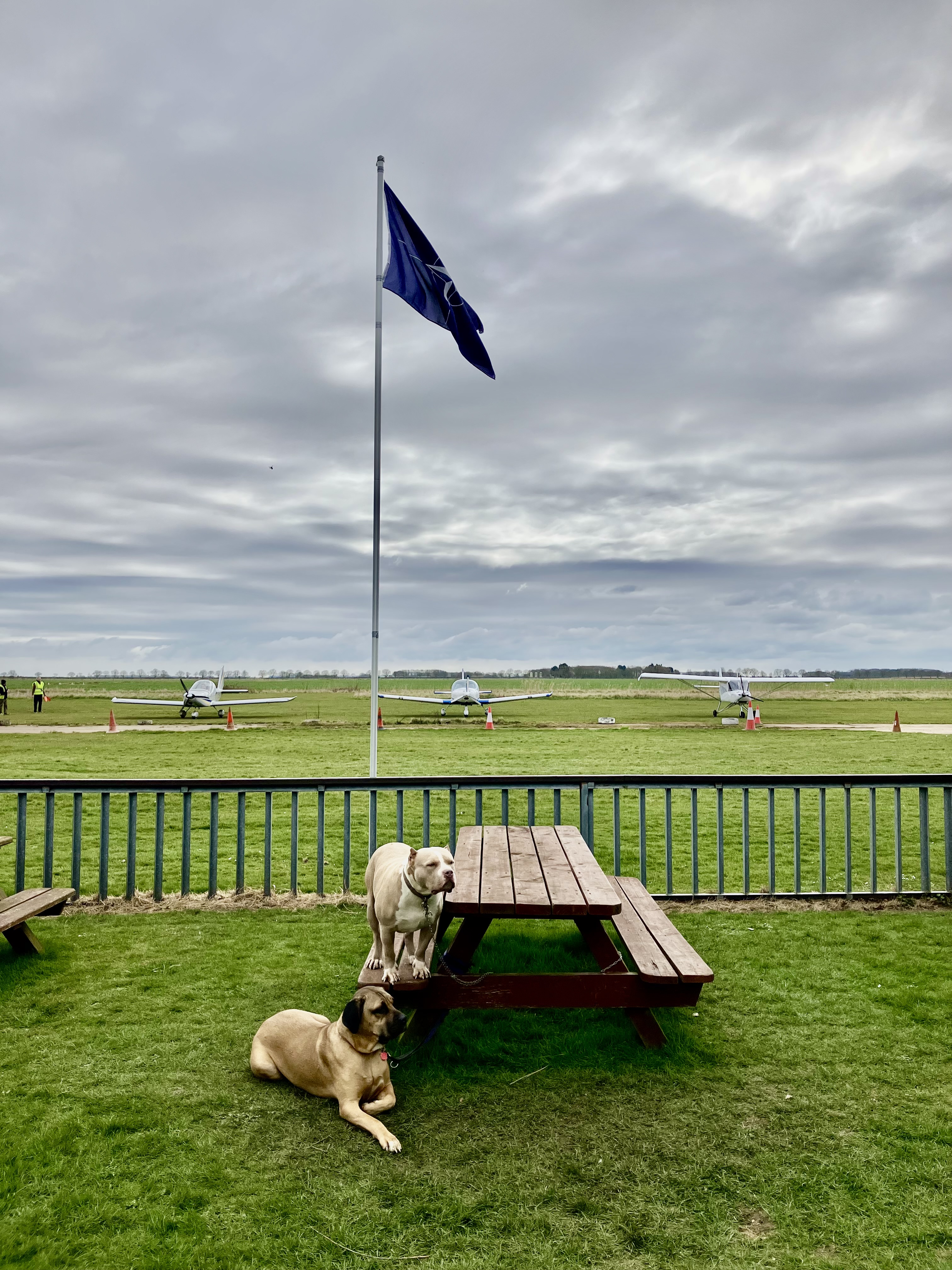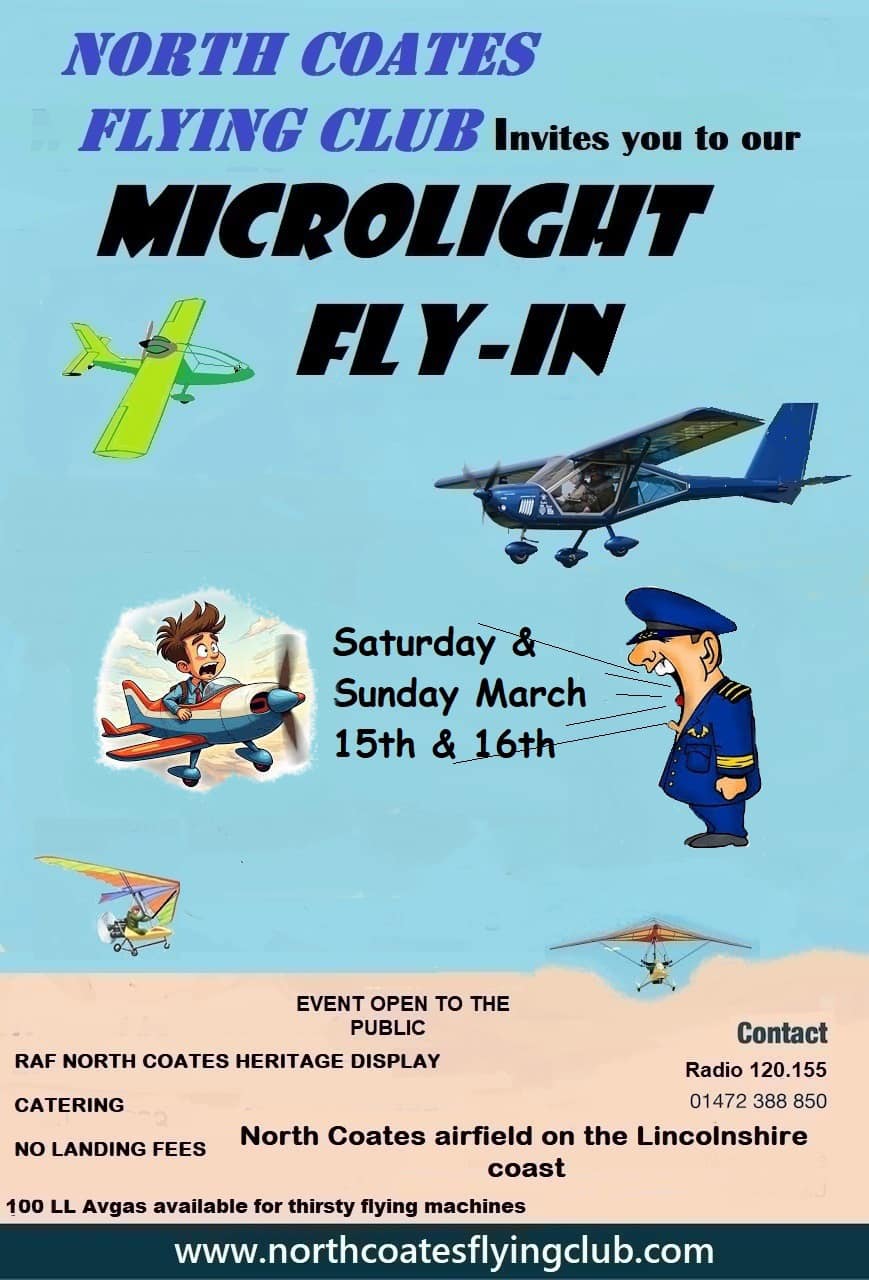North Coates Flying Club 16-03-2025

Cycling UK Louth Sunday Ride to North Coates Flying Club 16th March 2025.
With the forecast changing overnight to afternoon showers and a chilly 7 or 8 Degrees Celsius, today’s Ride Leader Tim Newbery was delighted to have our biggest turnout of the year.
Meeting up with Tim in Louth were Ty Harness, Alan Hockham, John Rickett, Steve Croton, Paul Linder, Martin Wood, Sven Livesey and guest rider Paul Reynolds. Glad to have you aboard Paul. Chris Owen had messaged that he'd meet up in Tetney.
Today’s destination; North Coates Flying Club which was holding a Spring ‘Microflight Fly-In’. The Saturday had been particularly busy and the Club had been told that the Pipistrel Alpha might be attending.
A slight north east breeze would end in a headwind all the way through Brackenborough and Tetney and en-route we’d meet up with a large number of cycling groups heading in the opposite direction. Maybe Louth would be inundated with cyclists for brunch.
Approaching Thoresby Lane in Tetney, we’d meet up with Chris who’d pedalled in from home. Numbers now up to ten. Skies were overcast with a few sprinklings of rain and it did indeed feel chilly. Perhaps heated gloves and socks might have been best after all.
An alteration of the route to follow Lock Road soon had us on the last leg to the airfield where we arrived just in time to see a number of light aircraft and a helicopter arrive for the festivities. This would be Martin’s first visit to the flying club and Paul Reynolds too hadn’t visited before. Hot drinks and freshly cooked sausage baps and beef burgers went down well.
North Coates military airfield itself has a wealth of history as originally it was an active air station during the First World War before it was the home of a Coastal Command Strike Wing in WWII and latterly Bloodhound missiles when Tim’s father was stationed here in the early 1960’s.
There’s a fascinating museum based here too which is worthy of an hour’s visit but no time today as we’d need to continue to Conisholme for an opportunity to indulge in ice creams at Appleby’s Ice Cream Parlour. Not busy when we arrived and it wasn’t just Tim to try a scoop or two. Alan ended up with a selection to include Parma Violet, the flavour he described as ‘interesting’.
With Chris returning home from here, a wind assisted ride made for good progress back to Louth for the remainder of the group, arriving at the Leisure Centre at a few minutes before 2 pm, a little ahead of schedule. John once again kindly offering up a final cuppa over friendly chit chat. Many thanks to all for the company and it was good to have had Paul Reynolds joining us too. 34 miles covered.
Coast bound to The Vista at The Boatshed, Huttoft Beach on Wednesday.
HISTORY OF NORTH COATES AIRFIELD
North Coates airfield has a long and illustrious history. It was originally operational during WWI, and although the landing ground came under the control of the RAF, it was operated by the Admiralty as a marine operations station and had 2 landing sites prior to 1918. One used by the Royal Flying Corp and one used by the Royal Naval Air Service. A unique combination not repeated anywhere else in the UK. 404 flight and 248 Sqn RAF became the first permanent unit and were tasked with anti-submarine coastal patrols over the Humber and the North Sea. 33 Sqn later concentrated on night-time anti Zeppelin patrols. De Haviland DH6 and the Sopwith Tabloid were used by 404 flight whilst 33 sqn used the Avro 504k amongst others. The Admiralty were in charge of the Humber Garrison and all aircraft movement over the Humber. Any pilot wishing to fly north would have to land at North Coates to gain permission to proceed. Seaplanes were required to fly low overhead where instructions would be given by the waving of coloured flags. Failure to follow instructions rendered the aircraft liable to be shot down!
During the Second World War, Lincolnshire’s Coastal Command Strike Wing as part of 16 Group were based at North Coates. At the time, anti-shipping attacks were treated with the strictest secrecy with only the briefest of details released to the BBC and press, the general public little aware of what was taking place. The Strike Wings using torpedo equipped Bristol Beaufighters of 236, 254 and 143 Sqn’s fought in some of the bitterest and ferocious air attacks of the war. They suffered heavy losses, in the same proportion as Bomber Command but inflicted great damage in relation to their losses. During the course of its operations, North Coates Strike Wing were responsible for sinking 117 enemy vessels. From 1942-1945, 120 aircraft failed to return with the loss of 241 aircrew. There’s a fitting memorial to the Royal Air Force Strike Wing based on the seafront at Cleethorpes.
Post war, the airfield was selected as the site of the RAF’s first Surface to Air Guided Weapons base, housing 48 Bloodhound missiles. The Bloodhounds were controlled in part by the underground bunker at RAF Holmpton. Since the 1990’s the airfield and hangars have been used by North Coates Flying Club.


